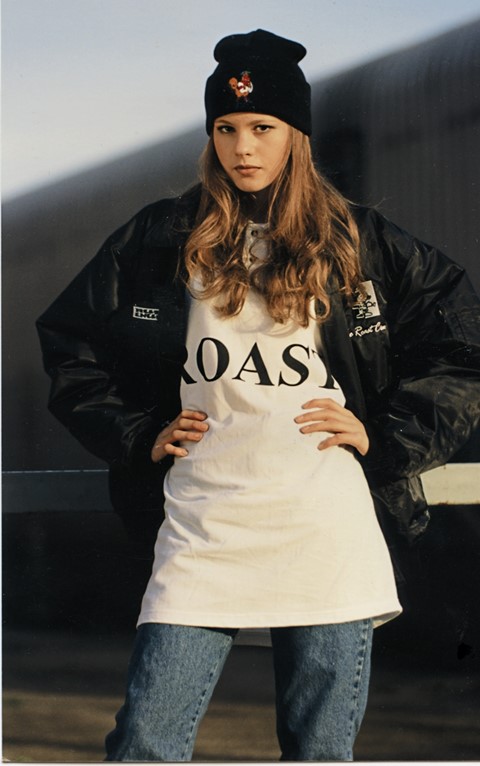A look inside Nina Manandhar's amazing new book, What We Wore: A People's History of British Style
Five years ago London-based artist and archivist Nina Manandhar made a significant observation while browsing through Flickr: that pictures of the past when captured "through the lens of the people who lived it" tended to provide a more nuanced and interesting documentation of trends and subcultures than those of professional photographers. Spurred on by this idea, it wasn't long before Manandhar was reaching out to family and friends to source their own photographs of their youthful style statements, sharing them on ISYS Archive (the website she co-founded) in a section named What We Wore. The concept was a success and in 2013 the artist developed What We Wore into its own standalone site, posting images submitted by the public, as well as cultural icons, alongside captions and anecdotes about the clothing and subcultures favoured by the protagonists.
"What people in other countries might just wear for Halloween, people in Britain flaunt 24/7"
Now, to the delight of many, Manandhar has compiled a book of her favourite entries, published this week by Prestel. Spanning the worlds of mods, punks, ravers and grime kids, and including submissions from the likes of Tracey Emin, Jeremy Deller and Katie Grand, the publication does not disappoint, proving a captivating, deeply nostalgic tribute to Britain's pioneering youth tribes of the past 60 years. As Ted Polhemus notes in the introduction, "Britain has – decade upon decade, subculture after subculture – produced mindboggling, gobsmacking street style. And we're talking proper subcultures, lifestyle choices, rather than some Saturday-night-only, for-a-joke fancy dress. What people in other countries might just wear for Halloween, people in Britain flaunt 24/7." Here, in celebration of its launch, we present a selection of our favourite photographs and caption extracts from the book.
Natalie Coleman, receptionist and 90s raver... [above image] "This picture was taken in November 1995 for a dance music magazine by my then-boyfriend Tristan Oneill, somewhere near Kensal Rise. We had been kicked out of the Kensal Green cemetary that afternoon for not having a permit for photography on the grounds, and had to look for another location. While looking we had a car crash so you could say it was a very eventful afternoon."
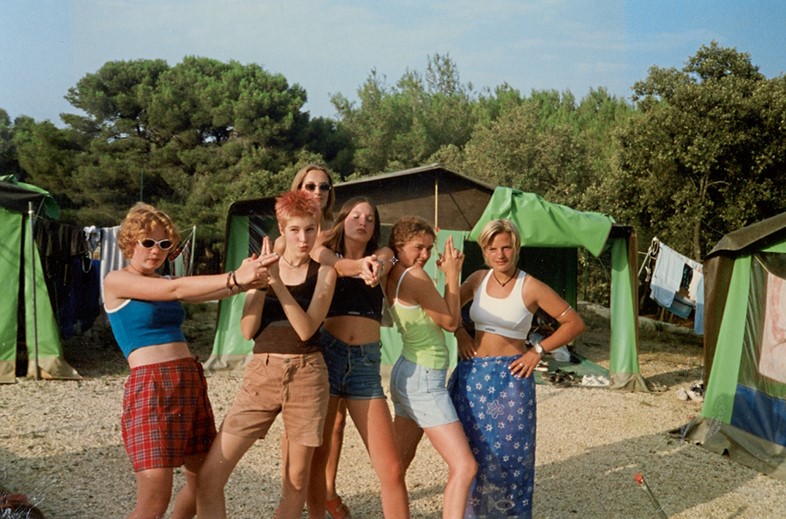
Fred Butler, accessories designer... "The summer after my GCSEs my school went on a trip to France. I was finally free and hyped about going to college to do a GNVQ in art and abandoning my uniform to dress exectly how I wanted EVERY DAY! This was the era when I was changing the colour of my hair a lot and my dad had to write a letter to my school apologising."
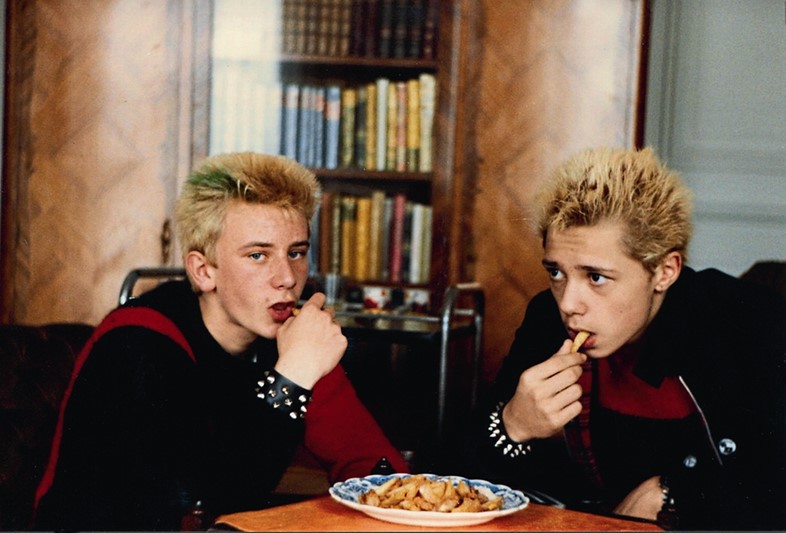
Andrew Gallix, writer... "I was only 11 when I got into punk, which was very young, even back then. The first punk garment I bought was a green t-shirt with a cheesy transfer of the words 'punk rock' daubed onto an unconvincing brick wall... The picture above is of me and my best mate Yannick. These red and black jumpers, knitted by Yannick's mum, were part of our own distinctive style. They had a zip down one side or on the shoulder so you could put them on and take them off easily. The colours were those of the anarchist flag."
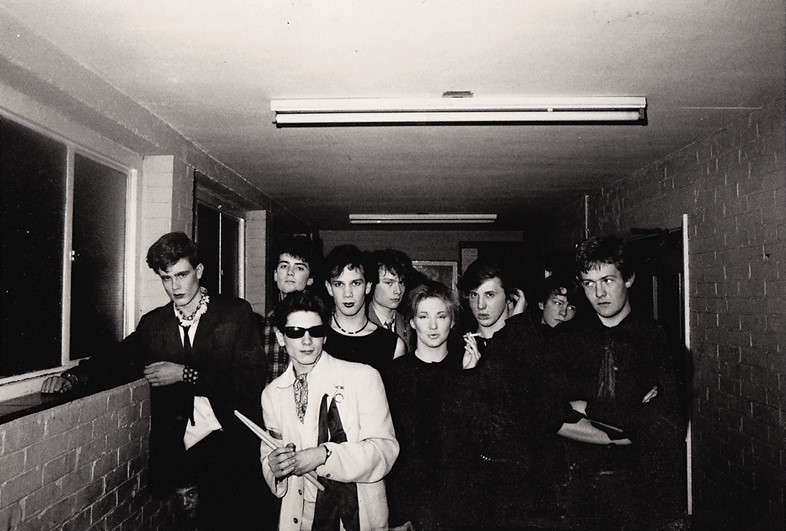
Jeremy Deller, artist... "This is me and fellow bandmates backstage at a school gig."

Russell Hiscox, founder of the website 'I Was A Teenage Shoegazer'... "In 1992 I was 16 and a shoegazer. Love beads were essential if you were part of the early 1990s shoegazing scene; it didn't matter if you were a boy or girl. The hairstyle to have was the floppy fringe. If you still lived at home with your parents, this would be almost impossible to get away with. The next best thing would be to have a centre parting with 'curtains' at the front."

Hannah Asprey, graphic designer and photographer... "The Riot Grrrl movement was a big deal for us. We were both shy and insecure and we felt that a lot of those loud females seemed to be shouting and screaming on our behalf... The photo above is from the summer before my last year at school, in 1998, so I was 15. We used to sit on the cathedral green in Exeter, pracising smoking and talking earnestly about Smiths lyrics. The clothes were very much about distorting a traditional representation of femininity – they were pretty and pastel but we wore them grubby, sometimes torn, with chipped nail varnish and unshaven armpits. We didn't actually walk around with words written on our bodies though – we did that just for this photo shoot."

Maggie Mitchell, secondary school teacher... "My sister Colly (left) and I in Hyde Park."
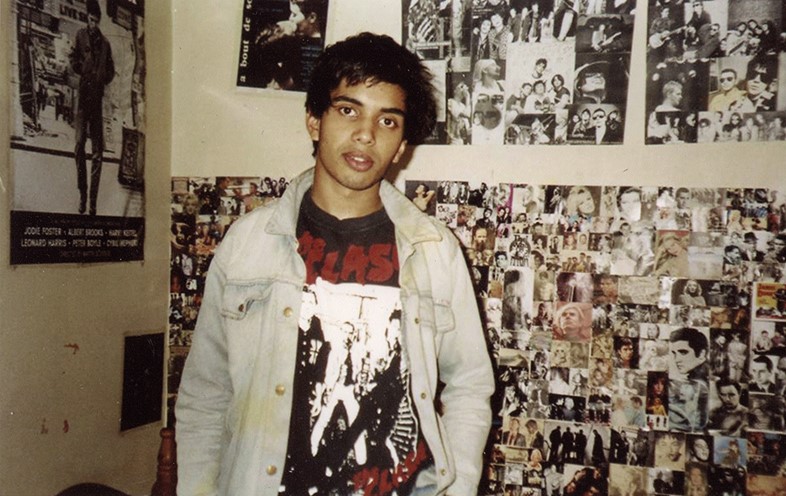
Ronojoy Dam, Group Creative Director, Dazed Group... "This photo was taken by my mum in my bedroom. I was 17-years-old. I think it was when I was the hungriest to learn and was at the most formative stage of my education, both in school and outside of it. The jacket was actually my sister's first ever denim jacket, which she bought in 1987 from Topshop... I'd worn it all through my GCSE period so it had taken a lot of wear – the shoulders had started ripping, so I held it together with safety pins. I'd got my ear pierced a year earlier to wear a silver hoop (black leather jackets and silver jewellery were the pairing I thought), but was now wearing a safety pin through it. My ma used to give me a box of sterilised safety pins to put through my ear, bless her; this Bengali woman in her late fifties in her sari helping me out with my punk homage."

Rob Milton, DJ and promoter... "I started the Dirt Box parties with Phil Gray in 1982. These photos are from the Dirt Box club weekends away in Bournemouth during 1984... A thousand or more revellers joined us on each occasion, bringing a touch of London cool to the provinces, or so we thought... The 'hard times' look that emerged in the early 80s was a style that grew from the Dirt Box. These images are from a few years later, a time when the rockabilly look came to dominate within our London crowd, although we preferred the term 'funkabilly'. It was adopted as street fashion a year or two later. As Frank Zappa said, 'The mainstream comes to you but you have to look for the underground.'"
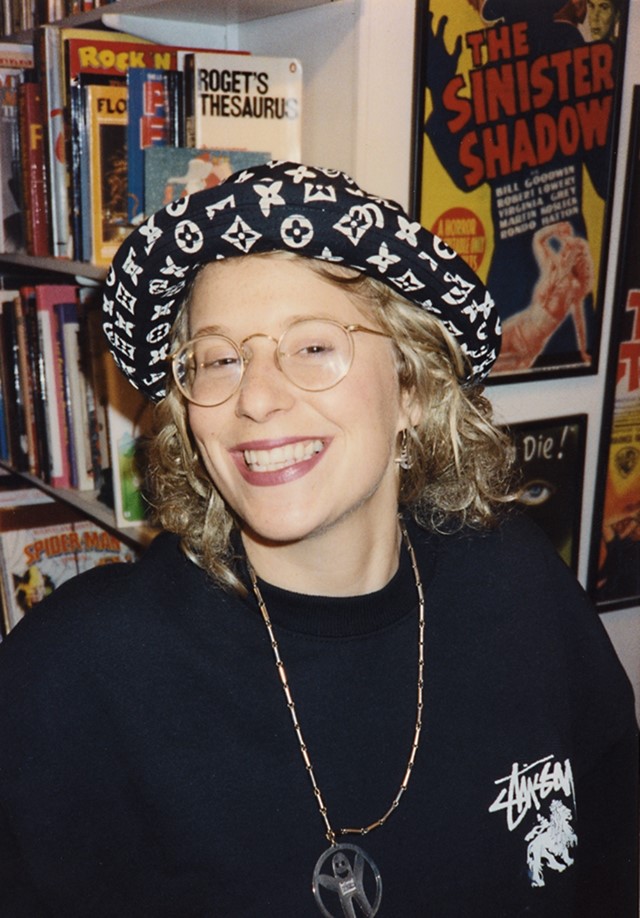
Fiona Cartledge, teen fashion specialist, founder of Sign of the Times... "From an early age I was mad about fashion and couldn't wait to have a say in what I wore... When I discovered Shoom in 1988 and got into the rave scene by the end of the '80s, I was inspired to start the Sign of the Times shop in Kensington Market, and later the parties of the same name. The look started off with baggy rave t-shirts and also Stussy tees and bucket hats. Sign of the Times was one of the few places that stocked Stussy in the UK at the time... Following the recession of the early '90s, we expanded as the economy picked up, and we championed many young designers, like Joe Bates, now of Sibling. Stylists including Isabella Blow, Katie England and Katie Grand would call in items for shoots, and we dressed Björk and Courtney Love, amongst others."
What We Wore: A People's History of British Style by Nina Manandhar is published by Prestel and is available now.
Words by Daisy Woodward
